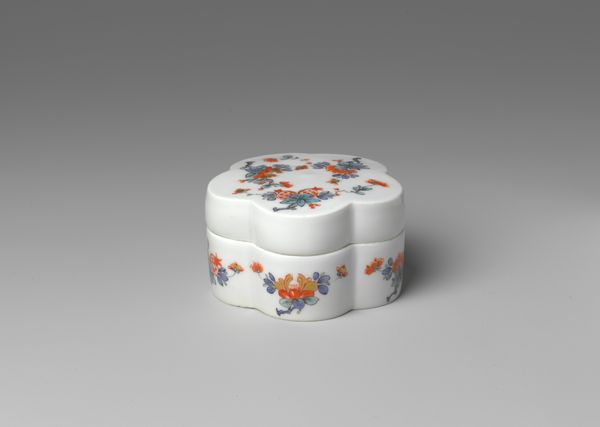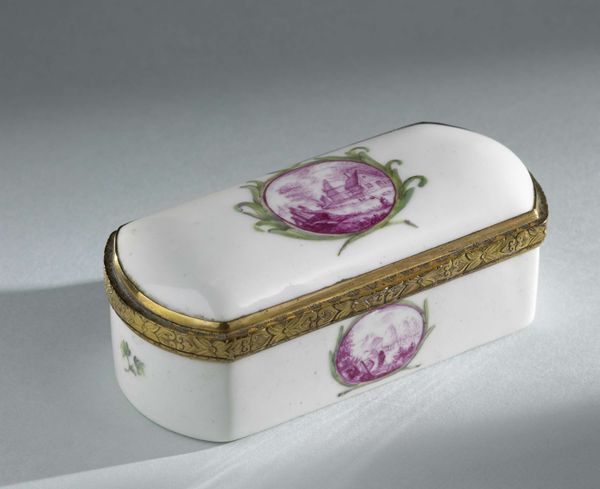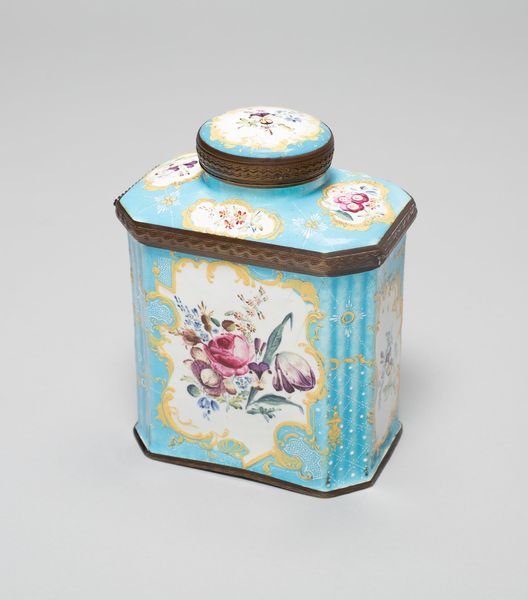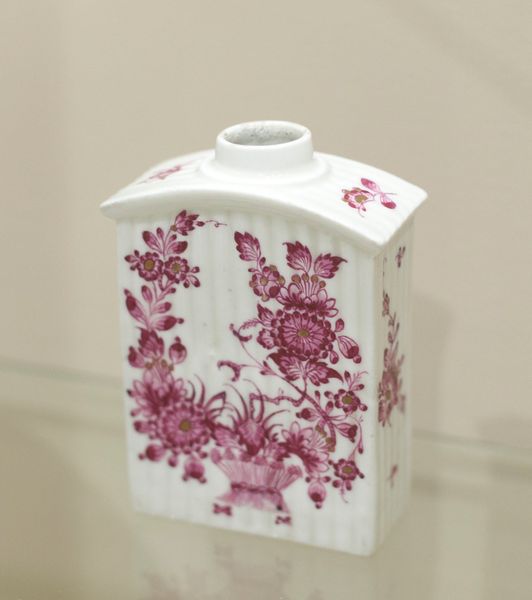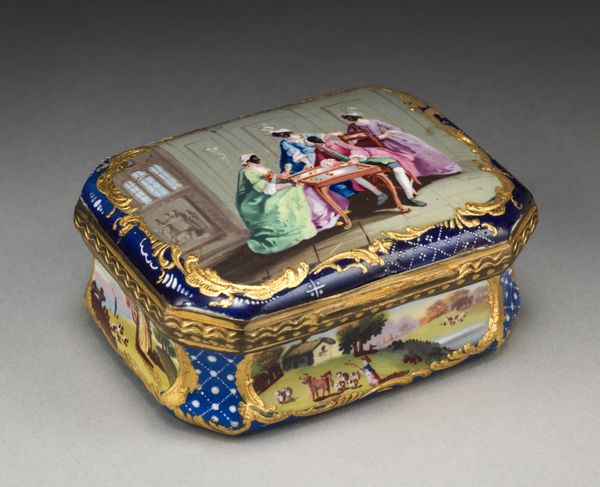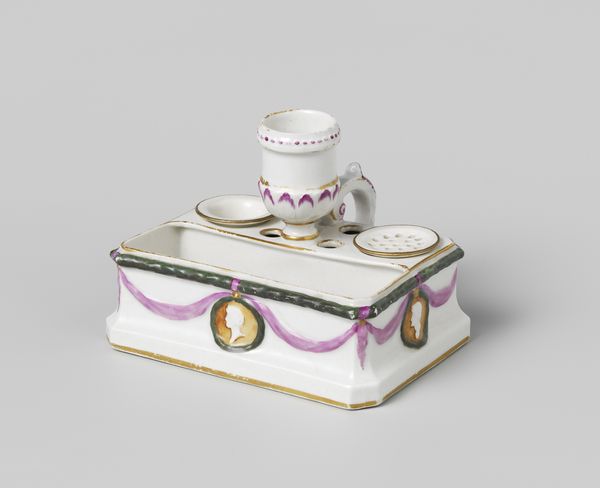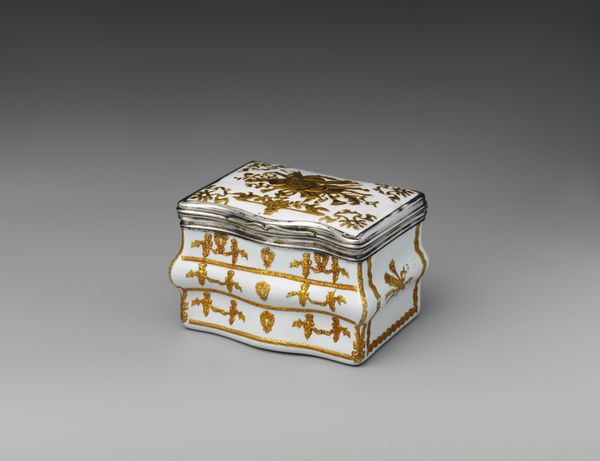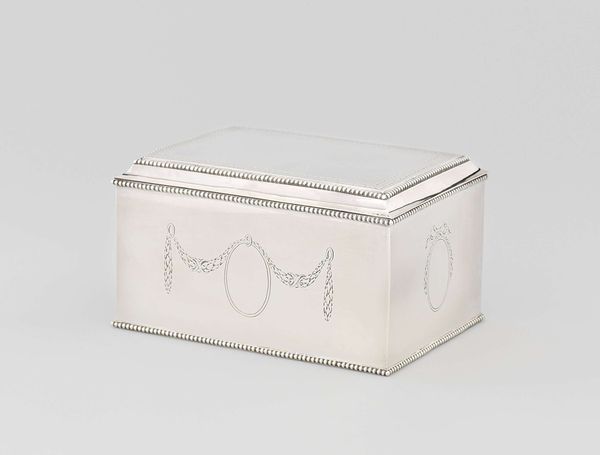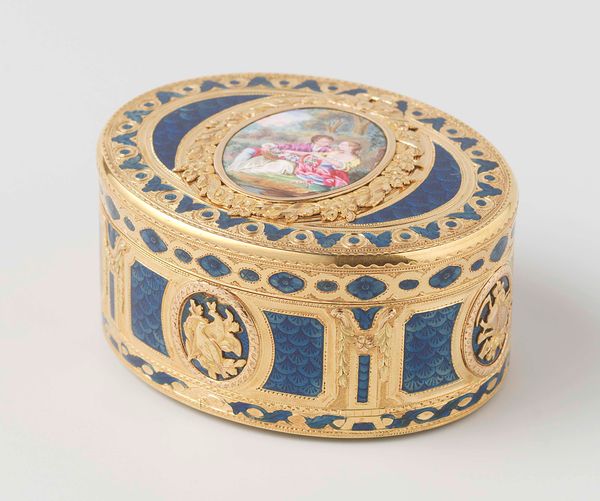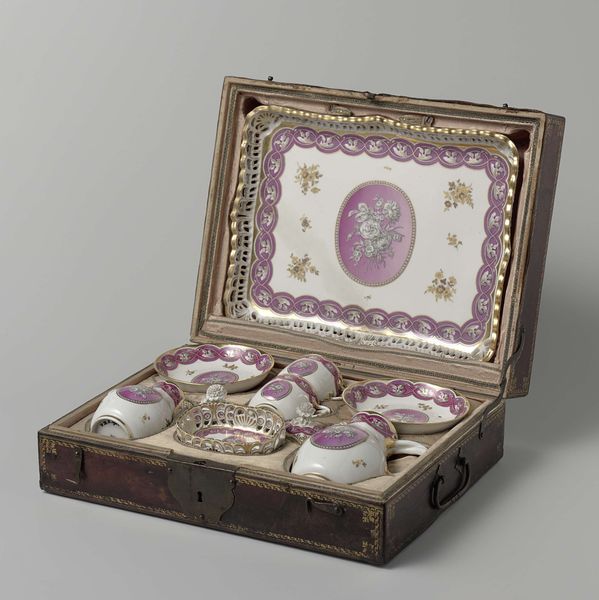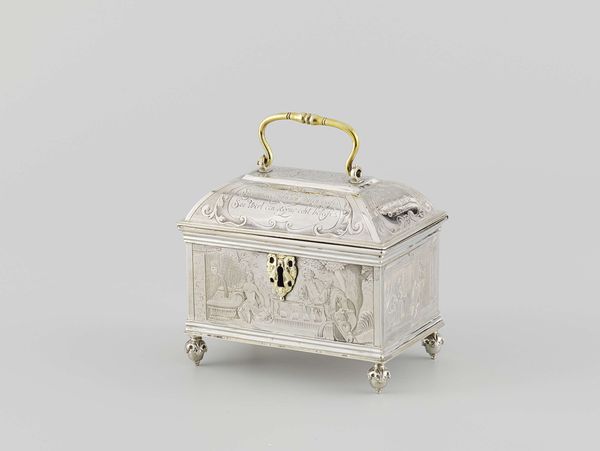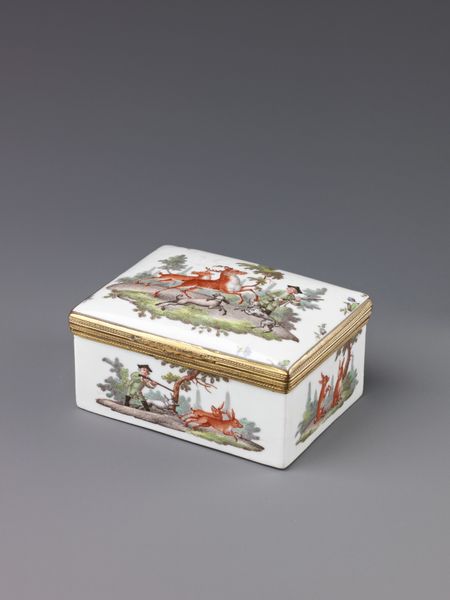
Dimensions: height 3.6 cm, width 4.9 cm, depth 9.8 cm
Copyright: Rijks Museum: Open Domain
Editor: So, here we have a rococo snuffbox from around 1778-1782, crafted in Loosdrecht, using porcelain, ceramic and gilding. It's incredibly delicate and ornate. What strikes me most is how this object shows the elite consuming what would now be a very costly artistic endeavor in ceramic miniature... What do you notice about this piece? Curator: I’m drawn to the relationship between the porcelain body and its surface decoration. Consider the division of labor required to produce this object. From mining and processing the raw materials to shaping, firing, and decorating the porcelain, each step represents a distinct skill and social context. What can you say about the role of porcelain in that period? Editor: I imagine porcelain would have been a coveted material, showcasing wealth and refined taste. It's interesting to consider all the labor, likely intensely specialized, just to create such a tiny, luxurious container. What's the story with snuffboxes in general? Curator: They were not simply utilitarian objects; they were powerful statements of social identity. Think about the rituals surrounding tobacco consumption during this period. The very act of using this box, crafted from such materials, would have performed class distinctions. Editor: Right, it becomes a theatrical prop in everyday life, highlighting status and access to global trade routes and materials. It is quite incredible how something so seemingly frivolous can reveal such complex processes. Curator: Precisely. The gilding, the delicate paintings – they are all marks of privilege, masking the material realities of their production. A good case study of supply chains and specialized crafts which also opens a debate around who benefits most from this type of intensive work, then and now. Editor: That gives me a lot to think about; a much more nuanced perspective than just admiring it for its beauty. It shifts my focus towards the human effort embedded within. Curator: It's a reminder that every artwork, even something seemingly small and decorative, has a profound relationship to the economic and social conditions of its time.
